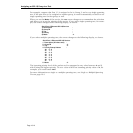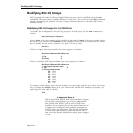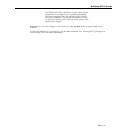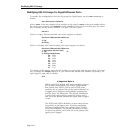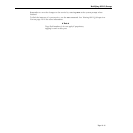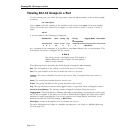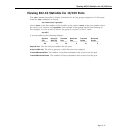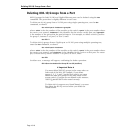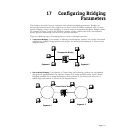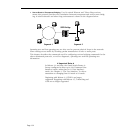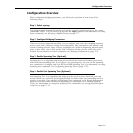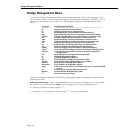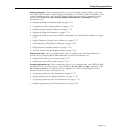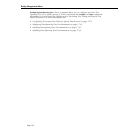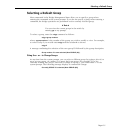
Deleting 802.1Q Groups from a Port
Page 16-18
Deleting 802.1Q Groups from a Port
802.1Q groups for both 10/100 and Gigabit Ethernet ports can be deleted using the das
command. The procedure is slightly different in each case.
To delete an
802.1Q group from a 10/100 port using single spanning tree, use the das
command, as shown:
das <slot>/<port> <instance> <groupId>
where <slot> is the slot number of the module on the switch, <port> is the port number where
the service was created, <instance> is the identifier for the service on this port, and <groupId>
is the number of the group that the port belongs to. For example, to delete an 802.1Q service
for group 2, instance 1 on port 5 of slot 2, enter:
das 2/5 1 2
To delete 802.1Q groups from a Gigabit port or 10/100 ports using multiple spanning tree,
enter the das command, as shown:
das <slot>/<port> <instance>
where <slot> is the slot number of the module on the switch, <port> is the port number where
the service was created, and <instance> is the identifier for the service on this port. For exam-
ple, to delete 802.1Q service instance 1 on port 5 of slot 2, enter:
das 2/5 1
In either case, a message will appear, confirming the delete operation:
802.1Q service deleted for Group ID 3 on 3/9 (slot/Port)
♦ Important Notes ♦
You must delete X802.1Q groups in the same order on
both ends of the link. For example, if you delete
groups 1, 2, 3, 4, and 5 on the local switch, you must
delete the same five groups in the same order on the
remote switch. If groups are not deleted in this manner,
X802.1Q packets will not be routed correctly.
To delete
802.1Q support over OmniChannel, you must
first delete the 802.1Q service before you delete the
OmniChannel.



